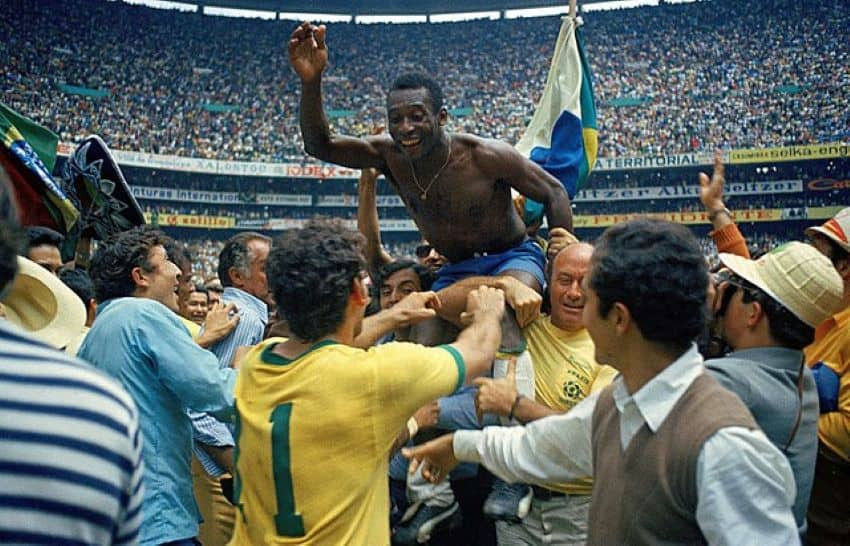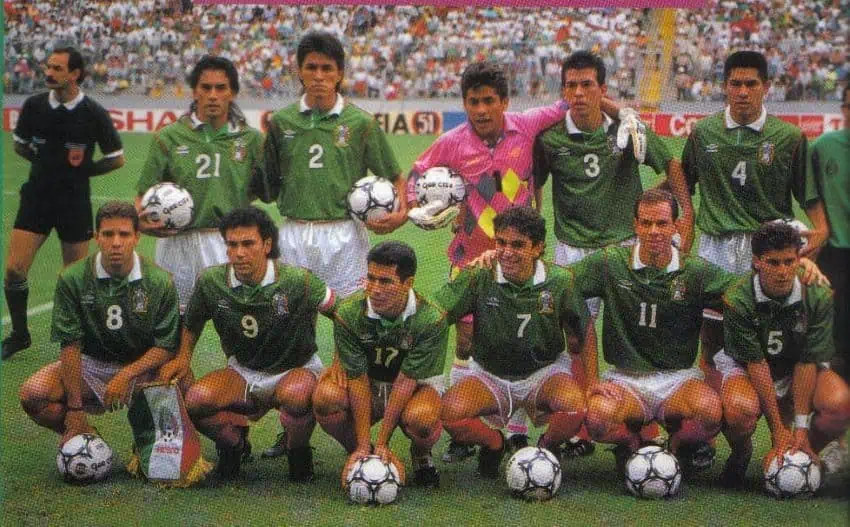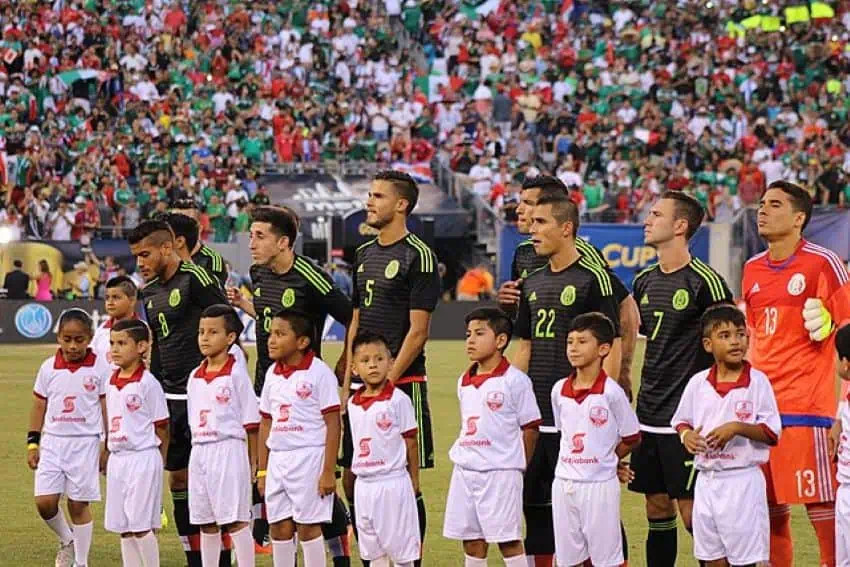In Mexico, soccer transcends sport; it’s a cultural phenomenon. When the national team, affectionately known as El Tri, competes in a major tournament, the nation unites, pausing daily life to rally behind their team. This passion is deeply rooted, stemming back to moments that etched Mexico into the global football narrative.
Mexico first announced its arrival on the world stage by hosting the 1970 World Cup. This tournament, remembered for its vibrant atmosphere and as the first World Cup broadcast in color, saw Mexico reach the quarter-finals for the first time. It was a landmark event, culminating in Pelé’s final World Cup triumph with Brazil at the iconic Azteca Stadium in Mexico City. Mexico further solidified its hosting credentials in 1986, again reaching the quarter-finals, a tournament etched in memory for Diego Maradona’s controversial “Hand of God” goal. These achievements cemented Mexico’s place as a consistent and respected footballing nation, not just within the CONCACAF region, but globally.
 Pele wins the World Cup in 1970
Pele wins the World Cup in 1970
Image alt text: Pelé of Brazil celebrates winning the 1970 FIFA World Cup at Estadio Azteca in Mexico City, a defining moment in Mexico’s football history.
This growing football pedigree naturally led to invitations to prestigious tournaments beyond its confederation, including South America’s Copa América. For Mexico, the Copa América represents a significant opportunity to test itself against the best in the Americas.
Mexico’s Copa America Journey: A History of Upsets and Near Misses
Since 1993, Mexico has been a regular invitee to the Copa América, stepping onto the pitch against footballing giants and legendary figures like Lionel Messi, Neymar, Ronaldinho, and Diego Forlán. Far from being overwhelmed, El Tri has consistently proven to be a formidable competitor in this South American championship.
In their debut Copa América in 1993, Mexico stunned many by reaching the final, narrowly losing to Argentina. This impressive start was no fluke. In 2001, Mexico repeated this feat, again finishing as runner-up. They also secured third-place finishes in 1997, 1999, and 2007, demonstrating sustained competitiveness in the tournament.
 Mexico
Mexico
Image alt text: The Mexican national team poses after securing second place at the 1993 Copa America tournament, showcasing a historic moment for Mexican soccer.
The 1990s and early 2000s are often considered a golden era for Mexican football. This period saw the rise of iconic players such as Luis Hernández, Cuauhtémoc Blanco, Hugo Sánchez, and Rafa Marquez. Regularly competing against powerhouses like Argentina, Brazil, and Uruguay in Copa América played a crucial role in elevating Mexico’s standing in world football.
This era of Copa America participation directly correlated with Mexico’s rise in the FIFA world rankings. Prior to their 1993 Copa América debut, Mexico was ranked 25th globally. By May 2006, fueled by consistent performances and exposure in tournaments like Copa América, Mexico climbed to an impressive 4th place in the FIFA rankings, even surpassing European powerhouses like Italy, France, and Germany.
The “Golden Generation” and the Copa America Challenge
Following the successes of the late 1990s and early 2000s, another wave of talent emerged, often dubbed Mexico’s “golden generation.” Players like Carlos Vela, Giovani dos Santos, Javier “Chicharito” Hernández, and Guillermo Ochoa maintained Mexico’s position as a top-tier football nation. While this generation brought Gold Cup titles and consistent World Cup round-of-16 appearances, and even an Olympic gold medal in 2012, Copa América success remained elusive beyond the early achievements. Many of these players showcased their talents at major European clubs, further highlighting the quality of Mexican football.
 Giovanni Dos Santos
Giovanni Dos Santos
Image alt text: Giovani Dos Santos, a prominent player from Mexico’s golden generation, who played for FC Barcelona and Tottenham Hotspur, representing Mexican talent on the global stage.
Despite the individual brilliance within the squad, Mexico hasn’t reached the Copa America semi-finals since 2007. The 2016 Copa América Centenario, held in the United States, was a stark reminder of this struggle. Despite fielding a strong team and reaching the quarter-finals, Mexico suffered a humiliating 7-0 defeat to Chile, a result still considered their worst loss in a major tournament.
Rebuilding El Tri: Copa America 2024 as a Stepping Stone
Recent years have seen a period of flux for Mexican football. While a memorable victory against reigning World Champions Germany at the 2018 World Cup provided a high point, consistent success has been harder to come by.
 Mexico national soccer team
Mexico national soccer team
Image alt text: The Mexican national football team in a team photo, reflecting on a period where they aim to regain their dominance in the CONCACAF region and on the international stage.
The rise of the United States and Canada in CONCACAF has challenged Mexico’s long-held dominance in the region. Mexico has struggled against the USMNT in recent encounters, a shift that would have been unthinkable to many Mexican fans a decade ago. Failing to advance beyond the group stage at the 2022 World Cup for the first time since 1986 further underscored the need for rejuvenation.
However, the future isn’t bleak. A new generation of Mexican talent is emerging. Players like Edson Álvarez, Jorge Sanchez, and Luis Chavez are establishing themselves, while rising stars like Santiago Giménez offer renewed hope. Giménez’s winning goal in the 2023 Gold Cup and impressive club form in Europe signal a bright future. Rumors of transfers to major European clubs further highlight the potential of this new wave of Mexican footballers.
 Edson Álvarez
Edson Álvarez
Image alt text: Edson Álvarez, currently playing for West Ham United in the English Premier League, embodies the new wave of Mexican footballers making their mark in Europe.
The 2024 Copa América presents a crucial opportunity for Mexico. Drawn in Group B alongside Ecuador, Venezuela, and Jamaica, Mexico has a favorable path to the knockout stages. Finishing top of Group B would be vital to avoid a potential quarter-final clash with Argentina. Manager Jimmy Lozano’s squad selection for the tournament, blending experienced players with emerging talents, indicates a serious intent to compete. The omission of veteran players like Hirving Lozano, Raul Jiménez, and Guillermo Ochoa signals a willingness to entrust the future to younger players on a major stage.
While powerhouses like the United States, Brazil, Colombia, and Uruguay also compete in this Copa América, Mexico has a chance to make a statement. A strong performance in this tournament could be the catalyst El Tri needs to regain momentum and build towards the 2026 World Cup, which Mexico will co-host. For Mexican football fans, Copa America 2024 is more than just a tournament; it’s a chance to witness the resurgence of El Tri on the continental stage.
